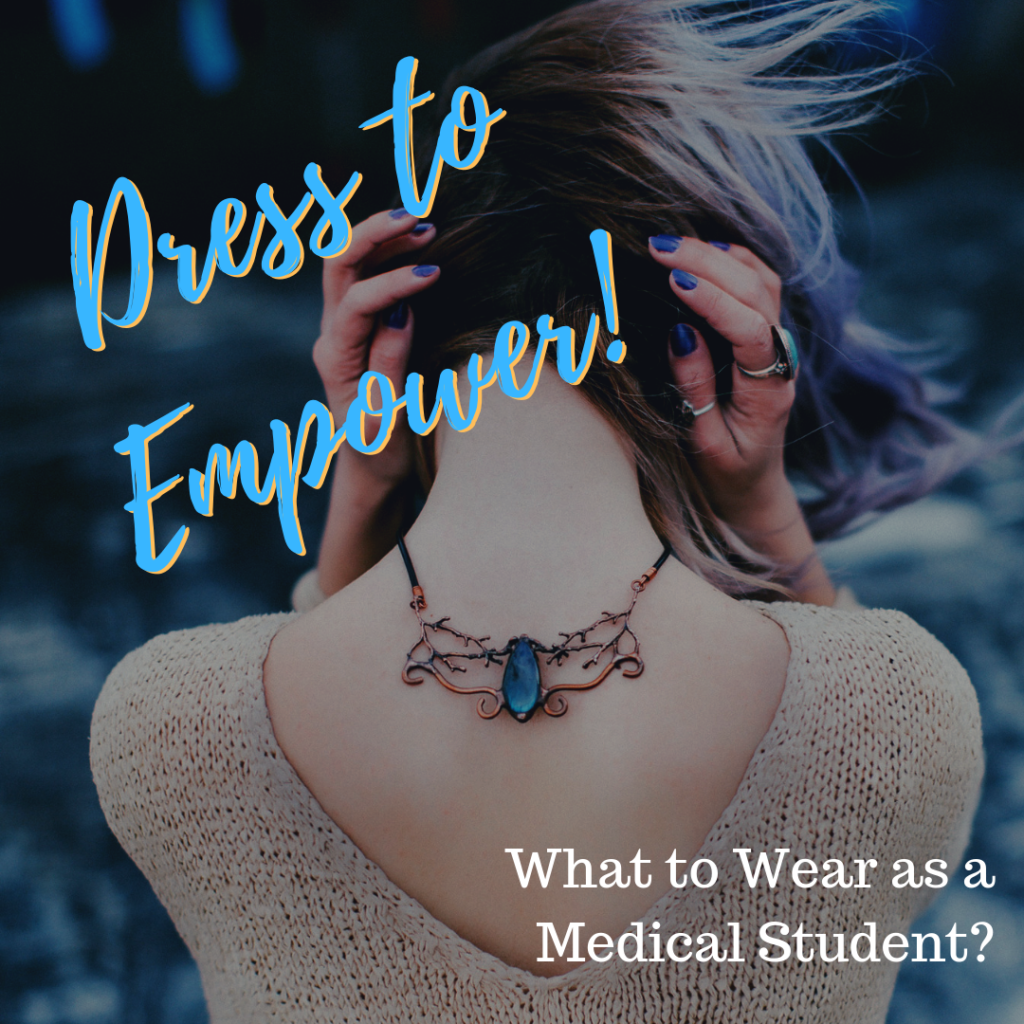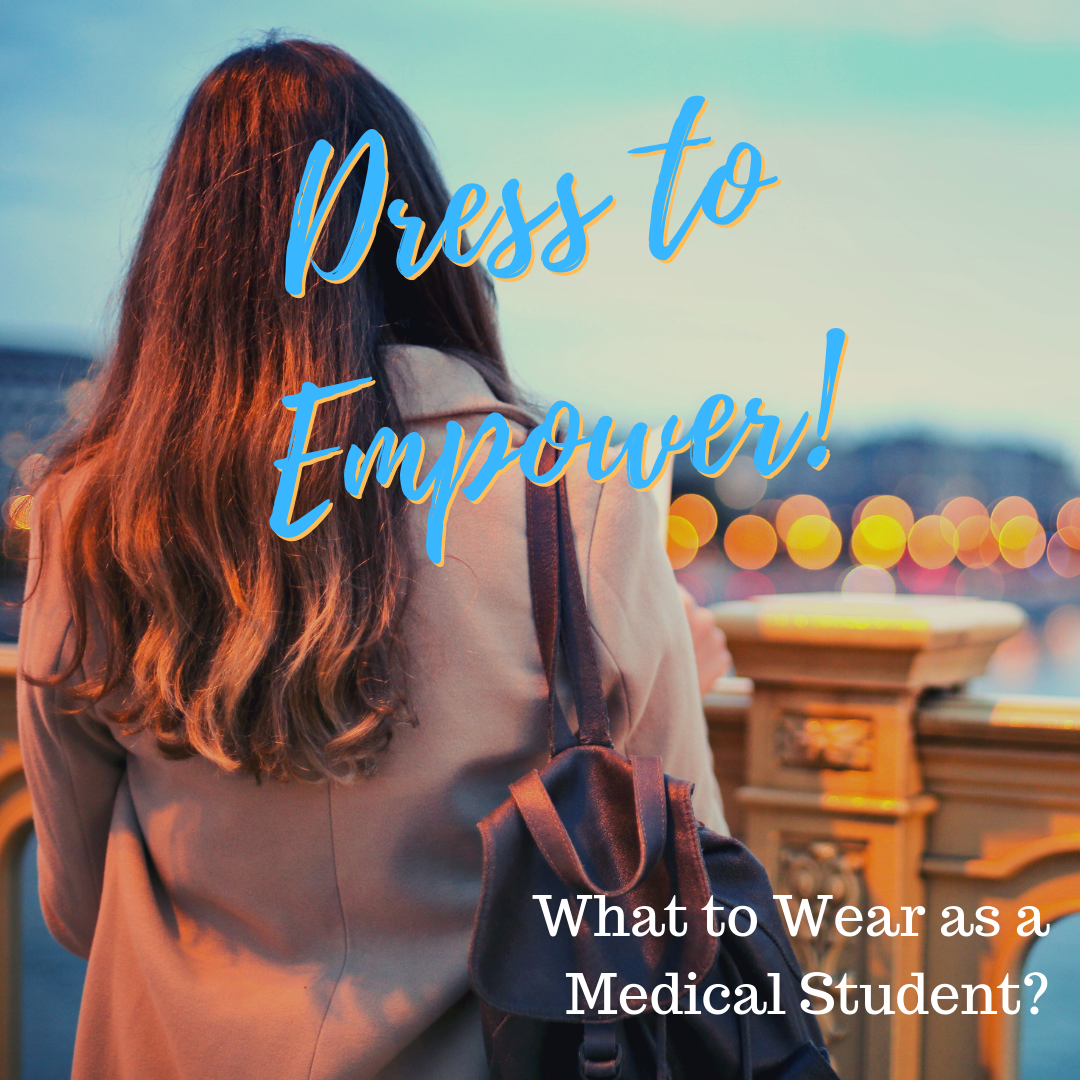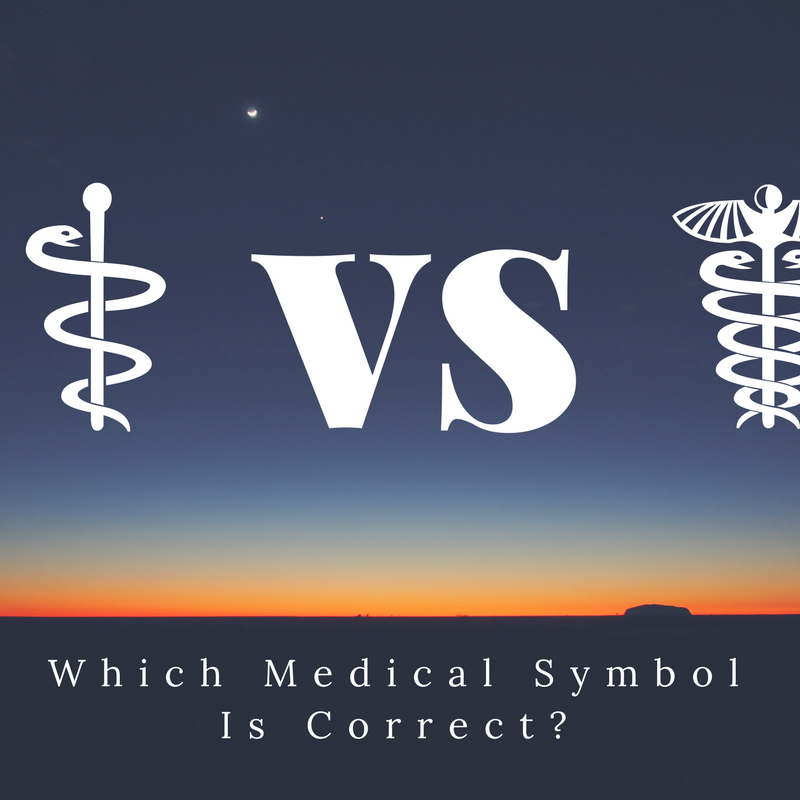Dress to… Empower!
By Grace Oliver, MD | @MGraceOliver
Intro: This article was sparked by conversation on Twitter, and I asked Dr. Oliver if she’d be willing to write an article on the topic. She delivered.

Which exact shade of eye shadow says “I am trustworthy?”
White Coat Attire Guidlines
Ladies:
• Wear makeup, so that people trust you and you don’t look tired.
• Don’t wear too much makeup, so that people trust you and take you seriously.
• No stilettos.
• Actually, no heeled shoes at all.
• No large hoop earrings.
• No dangly earrings.
• No red nail polish.
• No bold printed fabrics, they’re distracting.
• No unnatural hair colors.
• Max of two earrings per ear. No facial piercings.
Gentlemen:
• White coat attire requires shirt AND TIE.
• Don’t wear wrinkled shirts.
Three and a half years later, I sit in clinic in an oversized sweater, tapered trousers, and loafers. I meet the expectations, I guess. I can still remember that presentation from my medical school orientation well – and the many questions and hurt feelings it left me with. Who gets to decide how much makeup is “too much?” Do the 3-inch platforms on my operating room clogs count as a heel? Which exact shade of eyeshadow says “I am trustworthy?” Most importantly: why is my competence, respectability and value as a medical professional being yoked to my aesthetic expression?
My program’s list was loaded with moral judgment and borderline threats to encourage our adherence to their expectations of how women should dress. If you don’t comply, people won’t trust you. How dramatic! But I’ve realized that I am far from alone in receiving this type of advice. If you do an internet search of “how should female physicians dress,” you get articles like these (6). “Dress to attract, not distract” it urges, apparently believing the goal of my personal appearance at work is to be attractive to others, rather than comfortable and confident. There is a long history of this type of portrayal, but I will be so bold as to assert here that women are not merely decorative objects in the workplace, and that there is no “right” or “wrong” way for us to look in order to qualify as trustworthy people or excellent students.
First Impressions…
Societal expectations of how people look and dress are very complex, particularly for women. Even today: women and girls are told their outfits are distracting (7), natural hair is politicized and discriminated against (8), and people assume we are sick or shame us if we don’t wear the makeup we’re expected to wear (9). However, the goal of this article is to focus on the advice we get as women in medicine, and to examine the actual data available to see if there is support for the arguments typically given for these standards.
I understand the power of a first impression. I do not pretend to be a clothing revolutionary, fighting gendered wardrobe expectations at every turn. I am femme-presenting, and usually dress conservatively. I even wrote an article for SheMD about typical women’s attire I saw at a national conference. But this is how I choose to express my own aesthetic, and that’s what I feel most comfortable and confident wearing to work. It is my decision to dress this way, and I will always fight those who would try to command me or anyone to fit our unique self-expression into a specific box—particularly with fear tactics suggesting inherent moral failing of our patients based on our attire.
What about Data?
Most of the advice centers around concepts of trust, perceived competence and patient ease; and the claim that our clothing can influence these important elements of a patient interaction. So: what does data actually demonstrate? I found four studies on this topic: Au et al 2013, Thomas et al 2011, Hartmans et al 2013, and Petrilli et al 2017 (references 1-4 below). Unsurprisingly, the results of how clothing was associated with patient perceptions of their physician varied widely according to almost every variable you could think of. In an ICU setting, patients’ families preferred neatly-groomed physicians in white coats or scrubs (Au). In a primary care clinic, patients felt most at ease with female physicians in leisure clothing (Hartmans). In a dermatology clinic, patients didn’t find white coats necessary, especially for parents of patients in a pediatric setting (Thomas).
Though 53% of patients in a large cross-sectional study stated that “physician attire was important to them during their care,” there is no conclusive evidence describing how patients prefer us to dress (Petrilli). It varies by region, gender of patient, gender of physician, age of patient, age of physician, etc… Physics and temporal limitations prove I cannot both be in my white coat and out of it, in scrubs and also in leisure clothing.
I have been inundated with all kinds of explicit and implicit messaging on what administrators and other health professionals expect from my appearance. And yet, I’ve never had a patient or family member express discomfort or concern with my attire. There is absolutely no need to police each other’s self-expression; there is no evidence of patient benefit to looking a certain way at work. Most importantly, we simply have no right to intervene in anybody’s aesthetic but our own.
Dress for Yourself…
We must stop passing moral judgment on our peers and ourselves for how we dress. I never show up to work dressed to attract or distract. I am dressed to empower.
Thank you Dr. Oliver!
You can read the research referenced above using the links below, follow Dr. Oliver on Twitter (@MGraceOliver) and always feel free to comment on our article below, on Twitter (@FMstudent) or via Facebook.

References
- Au et al 2013: Physician Attire in the Intensive Care Unit and Patient Family Perceptions of Physician Professional Characteristics
- Thomas et al 2011: Patients’ Perceptions of Physician Attire in Dermatology Clinics
- Hartmans et al 2013: The Doctor’s New Clothes: Professional or Fashionable?
- Petrilli et al 2017: Understanding patient preference for physician attire: a cross-sectional observational study of 10 academic medical centers in the USA
- SheMD: Conference Attire
- Career Trend: How female physicians should dress
- Education Week: Girls’ outfits being seen as “distracting”:
- TIME: Politicization of natural hair
- Byrdie: No-makeup shaming




